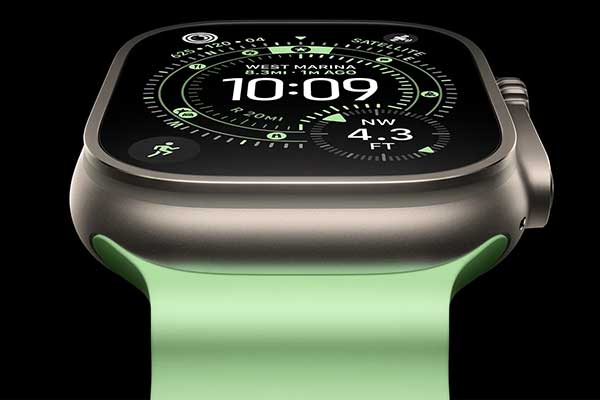New Satellite Connectivity Technology Rapidly Improves Communication

ECE Professor and Associate Dean for Research Josep Jornet talks about new satellite connectivity technology found in the Apple Watch Ultra 3 and Google Pixel Watch 4, and how the technology will positively impact and rapidly improve satellite communication.
This article originally appeared on Northeastern Global News. It was published by Cesareo Contreras. Main photo: Apple unveiled the Apple Watch Ultra 3 during its “Awe Dropping” event earlier this week. Apple.
Satellite connectivity on the Apple Watch Ultra 3 and Google Pixel Watch 4 is ‘a feat of engineering,’ says Northeastern wireless expert
Apple’s unveiling of the latest batch of iPhones yesterday may have grabbed much of the attention, but the satellite messaging added to the Apple Watch Ultra 3 is an engineering marvel, says a Northeastern University expert.
Josep Jornet, a Northeastern electrical and computer engineering professor whose research areas include satellite communications, says the technological development of integrated circuits and antenna design is moving very quickly.
“It’s a feat of engineering to get the equivalent of a satellite radio into something as small as a smartwatch,” he says, noting that not long ago radios of comparable power used to be massive pieces of equipment.
The Apple Watch Ultra is now a much more handy off-the-grid device, particularly for hikers and extreme sport athletes — the Ultra’s target demographic.
With the added satellite connectivity, Apple Watch Ultra wearers will still be able to send and receive messages from family, friends and emergency services, even during situations where they have no cellular or Wi-Fi coverage, according to Apple.
Additionally, using Apple’s Find My feature, they’ll be able to share their location once every 15 minutes with their most important contacts.
To accomplish this feat, Apple says it redesigned both the Ultra’s internal radio and antenna to communicate with satellites “as far as 800 miles above the Earth’s surface” that are traveling “at 15,000 miles per hour.”
To be clear, Apple isn’t the first company in the industry to accomplish this task. Its announcement comes weeks after Google added satellite connectivity to the Pixel Watch 4, and similar features have already been added to both the iPhone and Pixel phones.
But the fact that these features are quickly becoming standard in regular everyday consumer electronics is a sign that the technology is rapidly improving, Jornet says.
It’s important to remember that Apple and Google are not doing this work alone, Jornet explains, as both partner with satellite providers for much of their infrastructure.
Read full story at Northeastern Global News